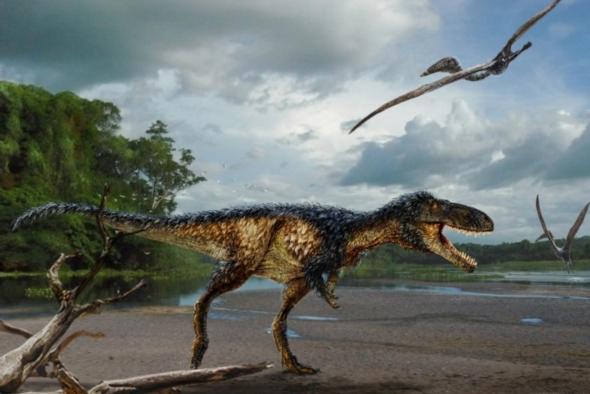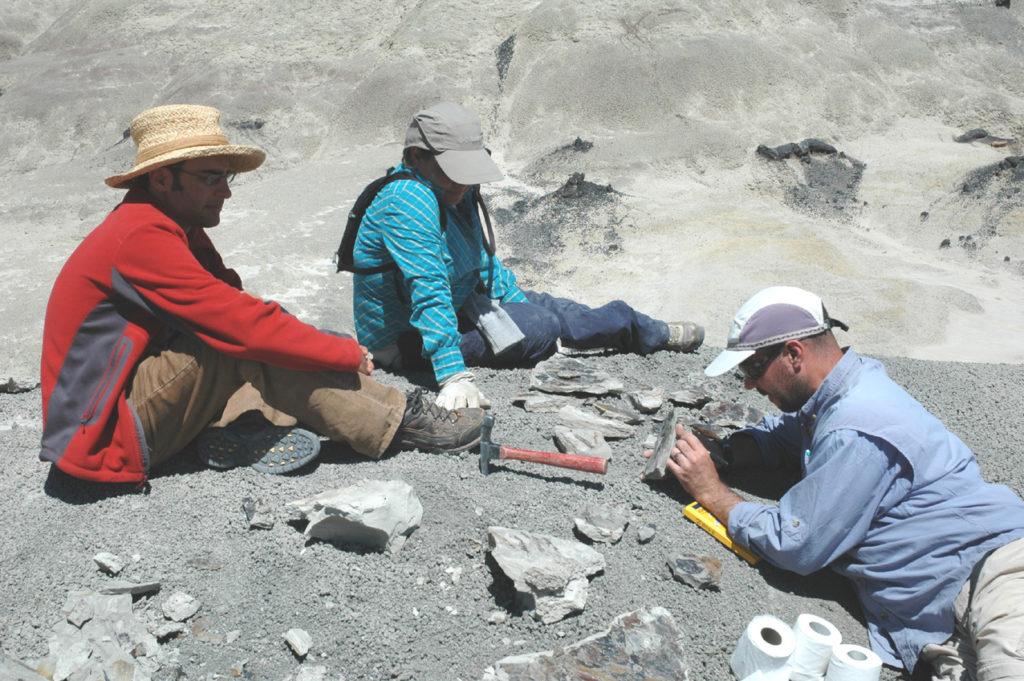Materialise Mimics Enables Researchers to Study Tyrannosaurus Rex Further & to Identify Smaller Cousin
 We certainly spend a great deal of time here at 3DPrint.com expounding on the virtues of 3D technology in regards to how it is allowing us not only to change lives but to study the human body and improve diagnosing, treatment, and preparing for complicated surgeries that may not ever have been performed before. We’ve also seen it in use in regards to studying ancient human bones such as that of Homo Naledi as well as using 3D technology to study the anatomy and partial skeleton of the ancient Lucy further in continuing to debate how she actually died.
We certainly spend a great deal of time here at 3DPrint.com expounding on the virtues of 3D technology in regards to how it is allowing us not only to change lives but to study the human body and improve diagnosing, treatment, and preparing for complicated surgeries that may not ever have been performed before. We’ve also seen it in use in regards to studying ancient human bones such as that of Homo Naledi as well as using 3D technology to study the anatomy and partial skeleton of the ancient Lucy further in continuing to debate how she actually died.
But think about all that we’ve been able to learn in terms of dinosaurs too, not to mention recreating skeletons so that we are able to enjoy a more comprehensive picture of the enormous creatures that roamed our Earth millions of years ago. Dr. Stephen Brusatte, the leader of the Vertebrate Paleontology Research Group at the University of Edinburgh, is a big fan of using 3D software for studying fossils. Employing Materialise Mimics, he has been able to gain a great deal more insight into a dinosaur most of us are familiar with due to its reputation for ferocity: the Tyrannosaurus rex.
With the use of 3D technology, Brusatte isn’t just checking out old bones, he is examining the dynamics of evolution in terms of ‘widespread time-scales.’ By looking at patterns over millions of years, he is able to detect trends. His work begins as a discovery is made, at the dig. Data is then later analyzed in his lab, allowing Brusatte and his team to begin to see a clear picture of what a dinosaur such as T. rex looked like and how it lived. The researchers want to know details about how the dinosaur and his cohorts functioned so many millions of years ago, and they also compare fossils to each other as well as comparing the facts gleaned from each.
Brusatte is able to answer many of his questions as he studies the head of a fossil such as T. rex. Often the most well-preserved area, the skull is a fascinating source of information regarding nerves, blood vessels, and even the sinuses and the ears. And here, the benefits of 3D scanning and 3D printing truly come into play for both archaeology and paleontology as rather than slicing open rare fossils and exploring, they are able to make extraordinarily detailed models to study instead.
“Dr. Brusatte scans his fossils and then uses Materialise Mimics to make a 3D model of the specimen,” states Stephanie Benoit the Materialise team in a recent blog.
This new process is also highly conducive to sharing information around the world, as more than one 3D printed model can be made of any fossil and sent by mail or files can simply be sent via email, and magically, researchers have access to ancient skeletons they may previously have had to wait years to see, if at all.

A reimagining of the new tyrannosaur Timurlengia euotica [© Scientific American; original painting by Todd Marshall]
“The CT scanning of fossils has become an invaluable tool, a standard tool. CT scanners are as standard as cameras and calipers and rulers for fossils,” said Dr. Brusatte. “Having a good platform for studying visualization and reconstructing modeling data from CT scans is essential, and 3D printers have turned out equally important.”
Once Brusatte had 3D printed the smaller bones reminiscent of T. rex, he was able to explore all the valuable content in the skull. From the brain cavity itself to the inner workings such as the sinuses and the ears of the ancient beast, Brusatte was able to perform such an intricate examination that he could indeed prove a link between the smaller dinosaur, the Timurlengia euotica, and the famed larger relative.
“This discovery also means Dr. Brusatte can continue to fill in the evolutionary puzzle of the tyrannosaurs: they most likely started our as smaller predators, but their well-developed brains and heightened senses slowly helped them evolve into the fearsome king of the dinosaurs!” states Materialise’s Benoit.
While Materialise Mimics has been able to play a huge part in studying fossils, indeed it was actually created for medical image processing and creating 3D images, whether they are being translated from a CT, and MRI, or other scans. The 3D software experts have created a path for translating the 2D into 3D with models that are extremely accurate in representing the human anatomy—or as we see here, that of creatures that lurked the very land that many of us live on today—over 70 million years ago. Discuss in the Materialise Mimics forum at 3DPB.com.
[Source/Images: Materialise]Subscribe to Our Email Newsletter
Stay up-to-date on all the latest news from the 3D printing industry and receive information and offers from third party vendors.
Print Services
Upload your 3D Models and get them printed quickly and efficiently.
You May Also Like
Heating Up: 3D Systems’ Scott Green Discusses 3D Printing’s Potential in the Data Center Industry
The relentless rise of NVIDIA, the steadily increasing pledges of major private and public investments in national infrastructure projects around the world, and the general cultural obsession with AI have...
Formlabs Teams Up with DMG MORI in Japan
In late June, Nick Graham, Chief Revenue Officer at Formlabs, announced on LinkedIn that the company had partnered with DMG MORI, one of the world’s leading machine tool companies, to...
EOS in India: AM’s Rising Star
EOS is doubling down on India. With a growing base of aerospace startups, new government policies, and a massive engineering workforce, India is quickly becoming one of the most important...
3D Printing News Briefs, June 25, 2025: R&D Materials, 3D Printed Veneers, & More
In today’s 3D Printing News Briefs, 3DXTECH has launched a program that gives customers early access to experimental materials, and the first Lithoz CeraFab Multi 2M30 in the Czech Republic...





































